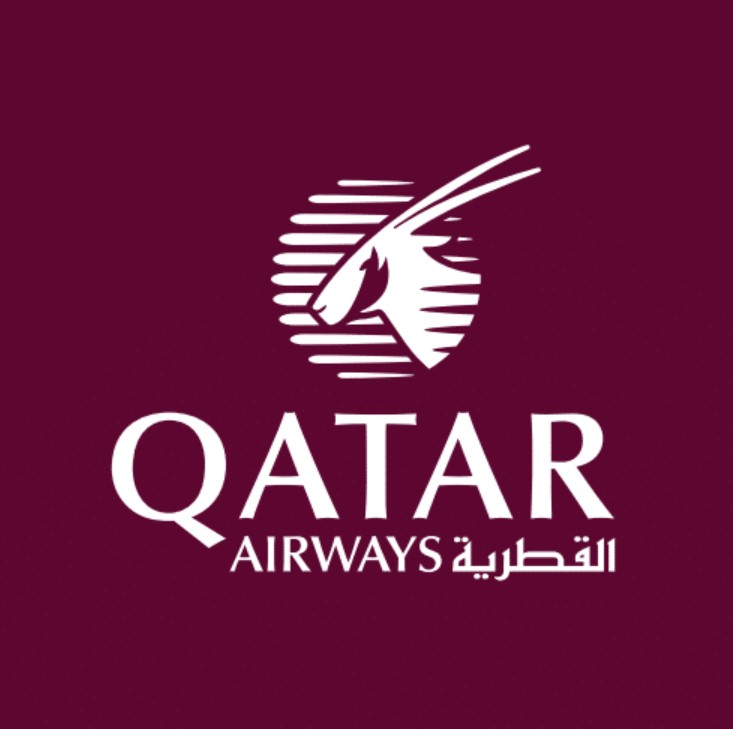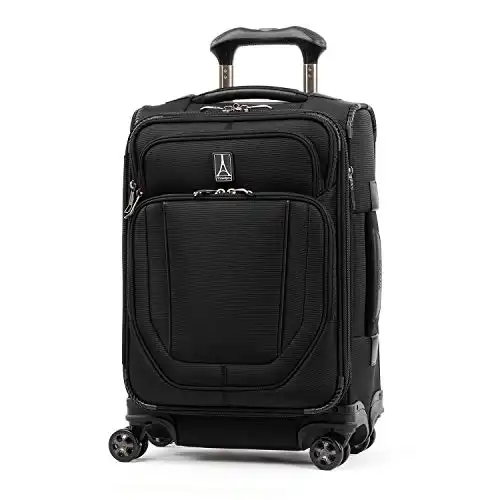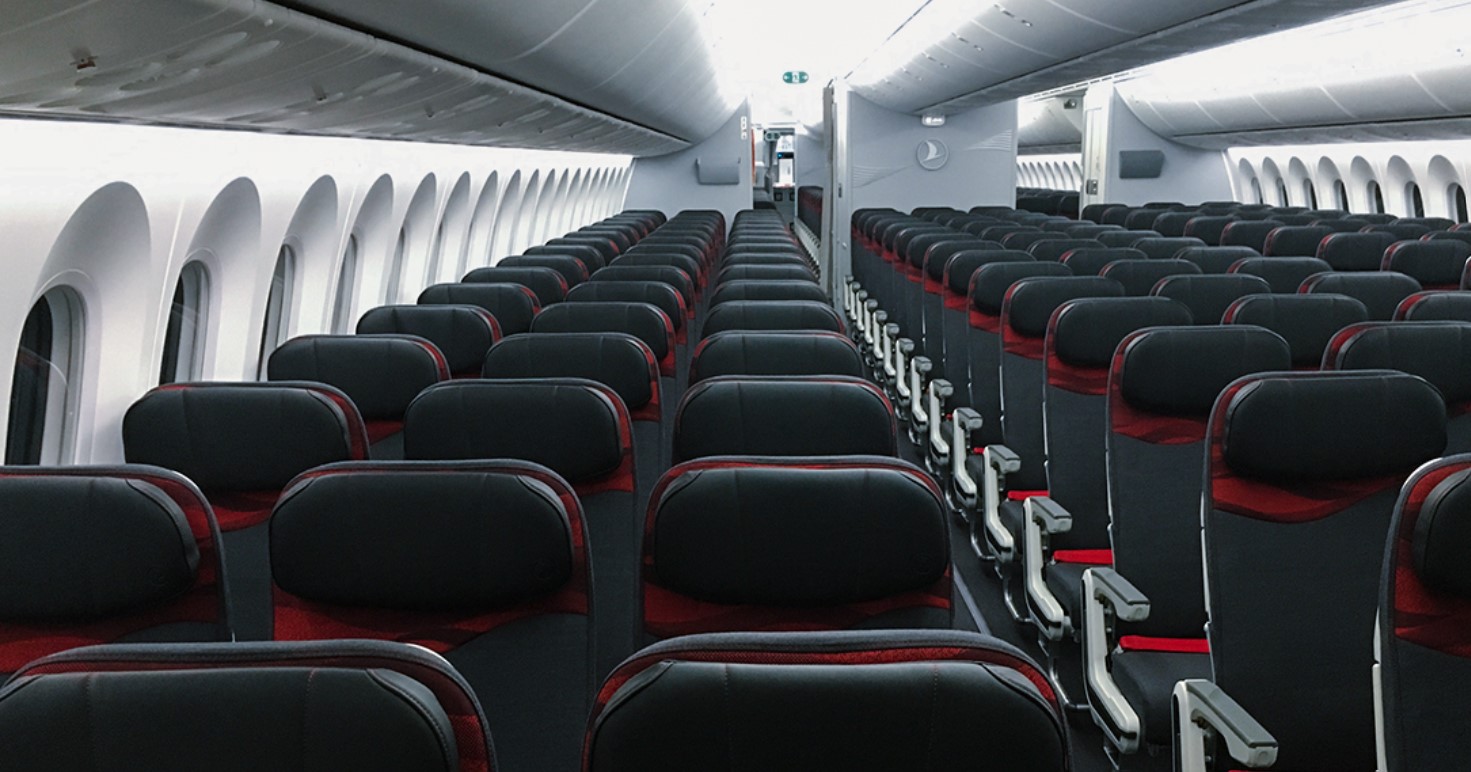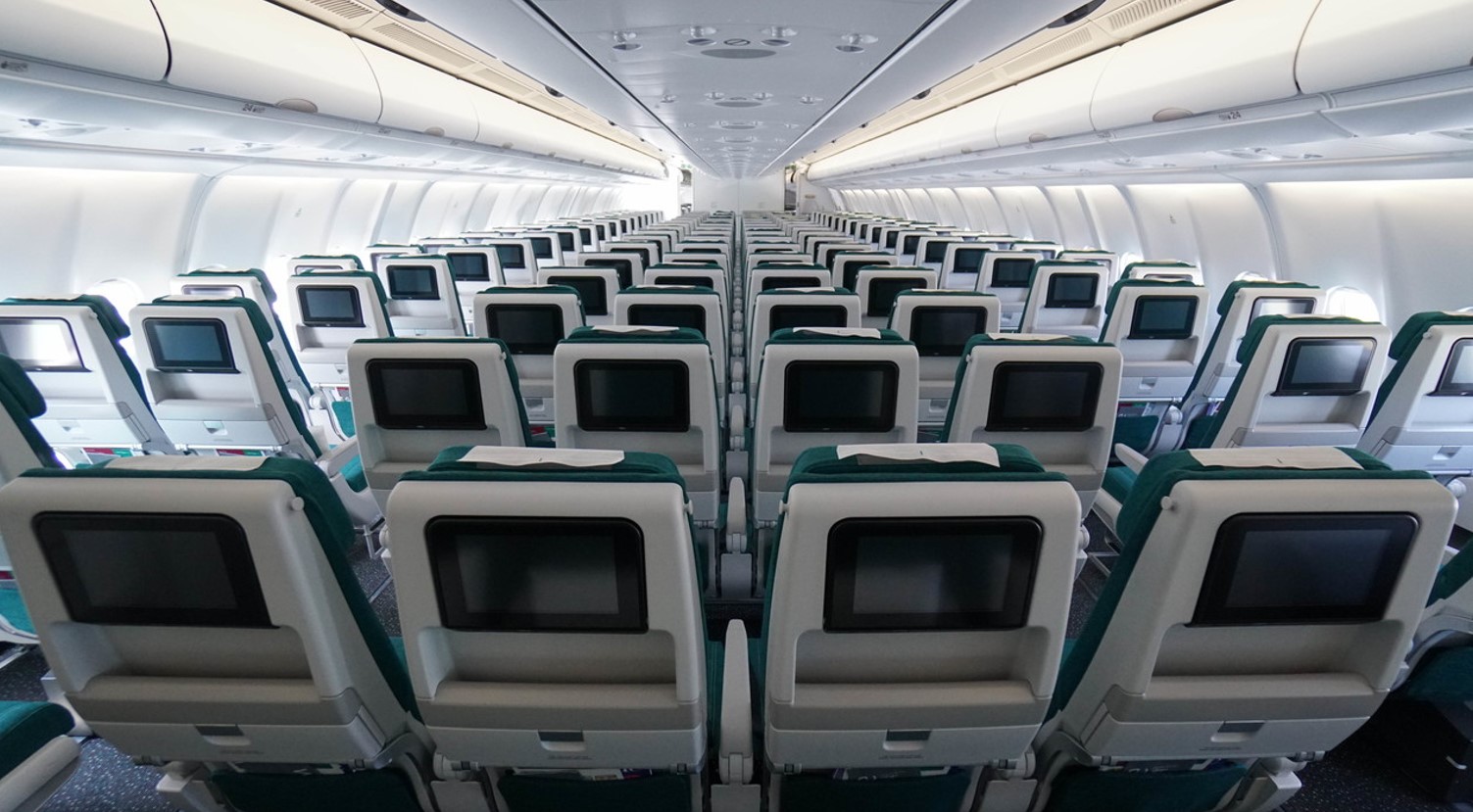Table of Contents[Hide][Show]
If you are going to be flying Qatar Airways, they have very specific guidelines for hand baggage sizes, liquids, and other unique items that you may want to bring on board.
In this article, we’ll explain the specific details of Qatar Airways’ carry-on guidelines, ensuring you’re well-prepared for your upcoming flight.
Qatar Airways Carry-On Policy
Qatar Airways hand baggage allowance limits you to one carry-on bag and one personal item, at no charge, for economy class and allows two pieces of hand luggage plus a personal item for those flying in business and first-class cabins.
The personal item must fit under the seat in front of you, and the hand baggage must be stowed in the overhead bin.
Qatar Airways Carry-On Dimensions
Qatar hand baggage size requirements for carry-on are:
- Dimensions for carry-on baggage: max. 50 x 37 x 25 cm (20 x 15 x 10 inches)
If you aren’t sure what size your hand luggage is, Qatar typically provides “size check templates” located at their ticketing counters and departure gates. But if you wait until you get to either of these locations and have an issue, it’s too late.
If the bag is too big or too heavy, you’re going to have to pay a fee, so it’s always better to know your bag size and the limitations in advance.
Recommended Carry-On Bag
If you are looking for an international-sized carry-on bag, the Travelpro 20-inch Global Expandable Spinner Carry-on is definitely one to consider since it fits within Qatar’s carry-on size limit of 20x15x10 inches.
It’s durable, reasonably priced, and holds enough for shorter trips (3-5 days). Plus the spinner wheels make it very easy to get through the airport quickly and effortlessly.
Qatar Airways Carry-On Weight Limit
Qatar requires carry-on bags to weigh less than 7 kg (15 lbs.) each. However, they don’t weigh your carry-on items prior to boarding, so you’re generally not going to have a problem if it’s too heavy. The weight issue applies to checked baggage more than carry-on bags since they weigh your checked bags when you check in for your flight.
Qatar Airways Personal Item
Depending on the class of service you are flying in, you may or may not be allowed to bring a second bag on board with you. Here are the rules for the number of carry-on bags you are allowed to bring onboard with Qatar Airways:
- Economy Class: 1 bag not exceeding 15lb / 7kg (20 x 15 x 10in/ 50 x 37 x 25cm)
- Business Class: 2 bags not exceeding 33lb / 15kg (20 x 15 x 10in/ 50 x 37 x 25cm)
- First Class: 2 bags not exceeding 33lb/ 15kg (20 x 15 x 10in/ 50 x 37 x 25cm)
In addition to your hand baggage allowance, you can also bring smaller personal items such as a lady’s handbag or a small briefcase; a coat, cape, or blanket; an umbrella; a pair of crutches or a walking stick; one small camera or binoculars; limited reading material; an infant’s carrying basket; duty-free items purchased on the day of your flight.
Related Content: Qatar Airways Flight Deals

Qatar Airways – Sale Fares
Qatar Airways Checked Baggage
If you need to have checked baggage with Qatar Airways, the fees you have to pay will vary depending on the route you are flying and when you choose to pay for the checked bags. On top of that, the weight allowance and limits vary depending on the route and cabin class you are flying in.
For these reasons you should check their website in advance to make sure your bags meet the allowable size and weight restriction. Here is the link to the Qatar Airways Baggage Allowance page.
As a general rule, you can check 2 bags on any class of service at no charge. You will have to pay a fee for any additional bags beyond that.
Extra Baggage Fees
Regarding fees for extra baggage, you will pay the standard rate if you pay when you check in at the airport.
If you pre-pay for extra baggage, in bulk you can save up to 70%. Pre-payments for baggage in bulk can be made on the Qatar Airways website, at Qatar Airways offices, or through our Contact Centre.
You can save up to 20% when you purchase additional baggage up to 6hrs prior to departure directly through Qatar Airways city/airport offices, and contact centers.
Carry-On Electronics
Passengers on UK and USA-bound Qatar Airways flights departing or transiting from Hamad International Airport with personal electronic devices must adhere to the following instructions.
UK-bound flights
- You may be asked by security staff to turn on personal electronic devices that are larger than a mobile phone, including tablets, e-books, and laptops during the security screening conducted at the boarding gate.
- Ensure your electronic device(s) has sufficient power to be switched on to demonstrate its functionality. Make sure you do not deplete power in your devices as charging points at the airport might be limited and you may require an adapter.
- Devices without any power will be placed in a secure location on the aircraft that cannot be accessed and returned to the final destination.
- If more than six personal electronic individual devices are already secured, then you will have to check your device into your hand baggage, which will be stored in the aircraft hold.
- If you are unable to check in your hand baggage with the device or do not have hand baggage, then your item will need to be deposited with Lost and Found. You will then be required to make a claim on the airline website and collect the item from the airport on your return.
USA-bound flights
- With immediate effect, all personal electronic devices carried on board all USA-bound flights from Doha, are subject to enhanced security screening.
- Ensure your electronic device(s) has sufficient power to be switched on to demonstrate its functionality. Make sure you do not deplete power in your devices as charging points at the airport might be limited and you may require an adapter.
- Consider packing all personal electronic devices that you do not intend to use during your flight into your check-in baggage.
- Examples of personal electronic devices that are subject to enhanced security screening include: DSLR cameras | Radios | E-readers | Walkie-talkies | Laptop | Tablets | Water purifiers | Large game consoles | Monitor| CD-ROMs | Drone | Electric guitars | Printers and scanners
Carry-On Liquids
The rules for carry-on liquids are set by the TSA, EASA, and FAA. Qatar Airways doesn’t have its own specific Liquids Policy, they just enforce the rules and policies of the Authorities.
- Containers with liquids and gel-like substances may hold up to 100 ml (maximum capacity must be printed on the container).
- All containers must be carried in a plastic bag (transparent, resealable, max. capacity 1 liter). One bag per person.
- The bag must be presented separately at security. Take your liquids out of your carry-on baggage at the security screening point and present them separately. In exceptional cases, liquids may be opened in the course of security checks and removed from their outer packaging.
- Liquid duty-free goods purchased at an international airport or on board an aircraft outside the EU must be transported in a tamper-proof, certified bag on connecting flights via an EU airport. The proof of purchase must be inside the bag and the bag must be sealed by the retailer.
- Medicines and special food (e.g. baby food) can be carried outside the plastic bag and must also be presented at security.
Carry-On Pet Policy
Similar to Emirates and Etihad, Qatar Airways does not allow passengers to travel with any kind of pets in the passenger cabin or as checked baggage. In accordance with the regulations of the United Arab Emirates government, all animals must enter the UAE as manifested cargo.
There are two exceptions to this rule:
Service dogs
On certain routes, Qatar Airways allows service dogs in the passenger cabin, free of charge, to accompany a passenger with a disability. On all other routes, service dogs will be accepted free of charge as checked baggage within the aircraft hold.
Falcons
Qatar actually allows you to carry one falcon in the Economy Class cabin of an aircraft, and a maximum of six falcons are permitted within the Economy Class cabin of any one aircraft (country regulations may apply).
Seriously, you’re not reading this wrong, it’s true. Check out this article if you to learn more.
Prohibited Items and Dangerous Goods
Dangerous Goods are classified as items or substances that could pose health or safety hazards to customers. The transport of these goods is regulated by international civil aviation regulations, and they are generally not allowed in either cabin baggage or checked baggage, with some exceptions.
Prohibited in Carry-on Bags
Items considered “dangerous goods” are prohibited under Qatar’s carry-on policy and include the following type of goods (partial list):Category Example items Guns, firearms, and other devices that discharge projectiles, including toys, antiques, and replicas. Pistols, components of firearms, compressed air, CO2 guns, pellet guns, and signal flares. Stunning devices. Stun guns, pepper spray, mace, and animal repellents. Objects with sharp points or edges. Knives, axes, ice picks, razor blades, scissors, and martial art equipment. Workers Tools Crowbars, drills, screw-drivers, saws, nail guns, blowtorches. Blunt Instruments Baseball bats, clubs, batons, hockey sticks. Explosives and incendiary devices (including replicas) Fireworks, ammunition, fuel.
Qatar Airways Prohibited in Checked Baggage
Here is an additional list of items that are not allowed in your carry-on bag or in your checked baggage:Category Example items Corrosives Mercury, acids, alkalies, and wet cell batteries.
Infectious substances such as bacteria, and viruses.
Poisons such as insecticides, weed killers, arsenic, and cyanides.
Radioactive Material.Oxidising Materials & Organic Peroxides Bleaches and fiberglass repair kits. Compressed Gases* (deeply refrigerated, flammable, non-flammable, and poisonous) Butane, oxygen*, propane, and aqualung cylinders. Flammable Liquids and Solids Lighter or heavier fuels, paint, and all matches. Explosives Fireworks, flares, ammunition*, Christmas crackers, and firearms.
If you want to see the complete list go to the Qatar Airways summary of restricted goods page.
Summary: Qatar Airways Baggage Allowance
Qatar Airways has a fairly standard baggage policy that is designed to ensure the safety and comfort of its passengers. While the size and weight limits can be confusing and vary depending on the route and cabin class you are flying, the policy of two checked bags and at least one piece of hand luggage, and one small personal item is very customer friendly.
Overall, Qatar Airways’ hand baggage policy strikes a balance between convenience and security, making it easy to adhere to when you fly their airline.
Here is a link to the Qatar Airways Carry-On page to make sure you have the most up-to-date information.






 Guide to Turkish Airlines Carry-On Size, Weight & Personal Items
Guide to Turkish Airlines Carry-On Size, Weight & Personal Items
Leave a Reply